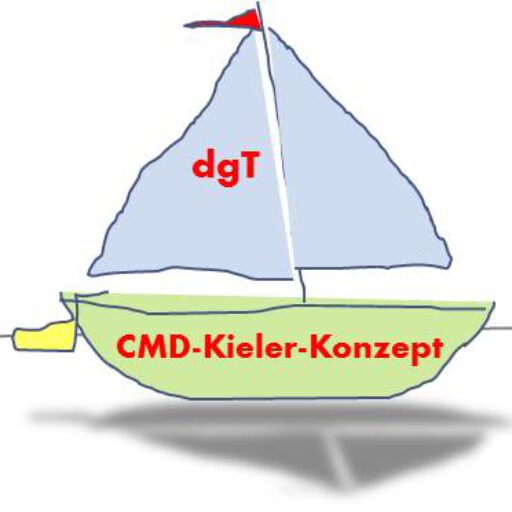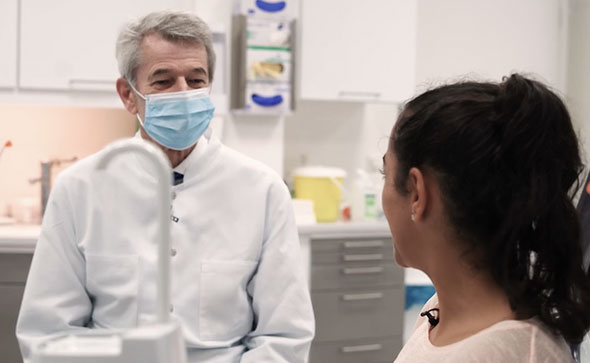CMD-KIELER CONCEPT
diagnostic-guided therapy (dgT)
Craniomandibular dysfunctions (CMD)
represent a significant health problem in the population. Numerous therapy concepts have been established in recent years for the treatment of CMD. Nevertheless, in some cases the desired success is not achieved. Reasons for this include the complexity of the disease and the associated increased demands on diagnostics and interdisciplinary coordination of the treating physicians.
This circumstance prompted the Kiel CMD team to systematize the experience gained over decades and to pass it on in a didactically suitable form. To supplement our training portfolio, we have now established the topic as a distance learning course
Diagnosis and Therapy of Craniomandibular Dysfunctions
according to the CMD-Kieler Concept diagnosis-guided therapy (dgT).
The distance learning course enables you for the first time to learn the complex subject matter online in the comfort of your own home while continuing your professional work over a period of 9 months. Various pedagogical tools are available for this purpose. The course ends with an online final exam.
Distance learning course for CMD now available!
Distance learning course CMD
Diagnosis and treatment of caniomandibular dysfunction
using the CMD Kiel concept dgT

Scientific Director: Prof. Dr. Helge Fischer-Brandies
Organisational management: Daniel Harms
Our distance learning course is primarily aimed at dentists, orthodontists, oral surgeons and students of dentistry who want to expand their knowledge of craniomandibular dysfunction. Upon successful completion, it enables you to successfully meet the growing demands on management, quality and economics of the interdisciplinary treatment of craniomandibular dysfunction.
The course material is spread across three electronic textbooks, Connectibooks CMD 1 to 3 (CB1, CB2, CB3). The Campus Manager, which accompanies you throughout your studies, handles all electronic administration. It also provides you with all texts, interactive learning units, instructional videos, including performance reviews.
Prerequisites for admission to the distance learning course are that the applicant has started or successfully completed a degree in dentistry at a German or foreign university.
Distance learning course in learning about the diagnosis and treatment of CMD
The distance learning course can be completed alongside work.
With intensive study, the time frame is designed for 3 months.
However, it is entirely possible to work through the requirements for the exam in up to 9 months with about 30 learning hours per month.
Who can benefit?
Why a CMD distance learning course?
However, the volume offered is far more important. The distance learning course leads to very complex treatment cases, which are trained interactively. Over 240 hours of theory are difficult to master in face-to-face teaching. Corona has taught us that a lot of it can be done better in homework.
However, the practical courses following the distance learning course must then take place hands-on.
- Connectibook CMD 1: Fundamentals and Diagnostics
- Connectibook CMD 2: Therapy according to the CMD Kiel Concept dgT
- Connectibook CMD 3: Training Planning and Control of Therapy
The main features of the didactic approach are a combination of:
- extensive video material
- interactive training for self-monitoring
To learn clinical diagnostics, the following are used:
demonstrated
- diagnoses and treatment planning are trained interactively
Diagnostic imaging is becoming:
- through the diagnoses made by the specialist as a basis for visual reworking interactively trained
To learn the therapy, you will need:
- treatment procedures are shown
- treatment procedures are trained interactively
The performance review is conducted by:
- in interactive training using multiple-choice questions integrated into the text for self-monitoring
- using single-choice questions at the end of each Connectibook chapter by chapter for self-monitoring
The path to successful participation is:
- with at least 60% of the questions answered correctly, the course is considered a success and confirmed in a certificate
- made achievable by the possibility of repeating the exam three times at intervals of one to three months

